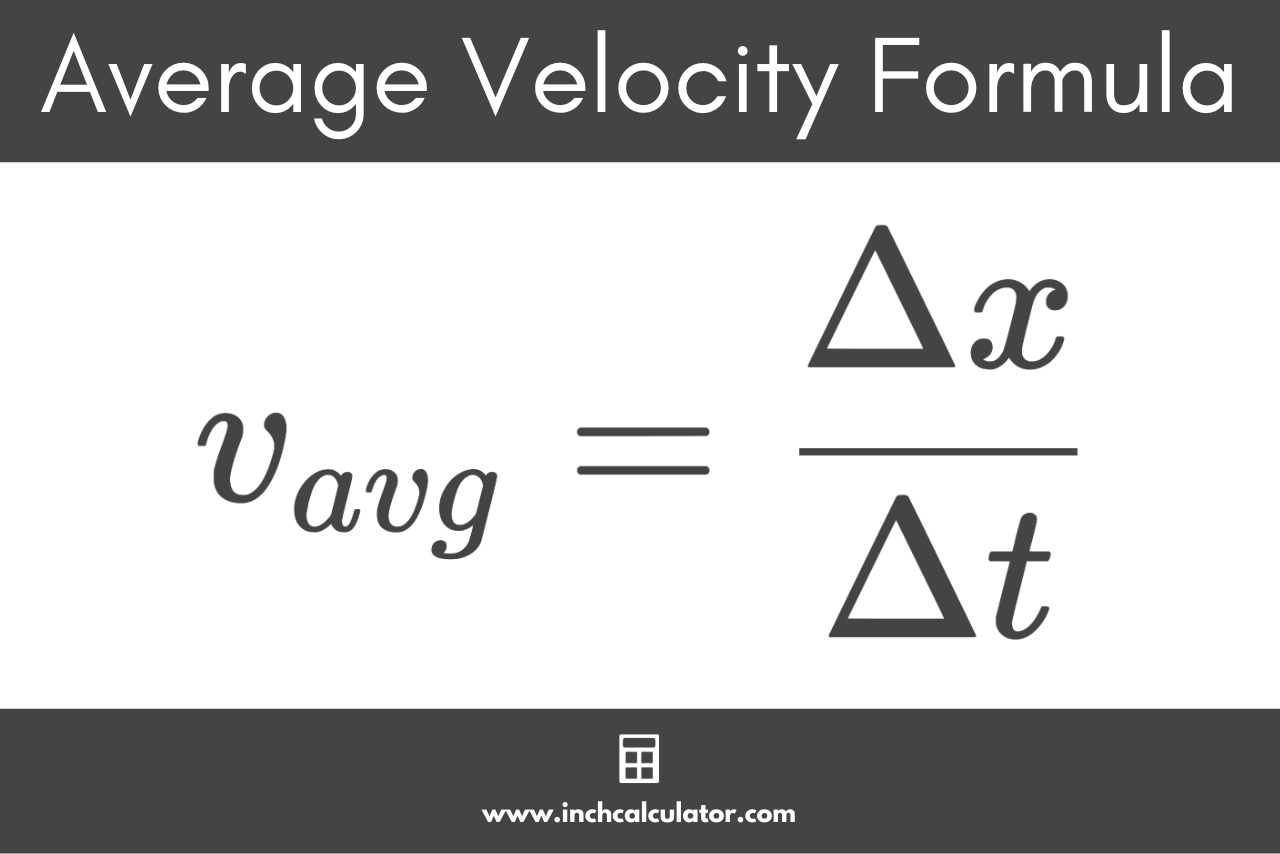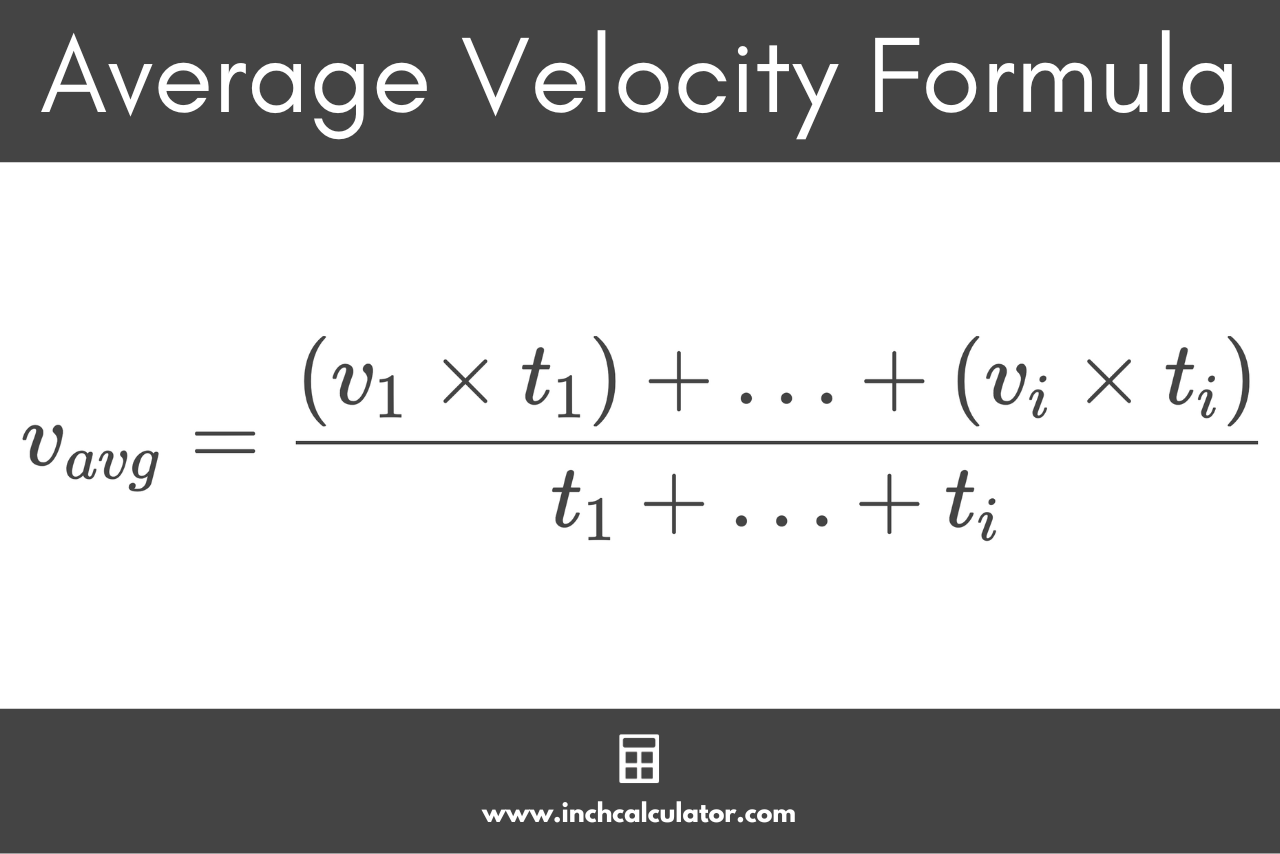Average Velocity Calculator
Calculate the average velocity, final velocity, and initial velocity using the average velocity calculator below.
Average Velocity:
Average Velocity Formula
Final Velocity Formula
Initial Velocity Formula
On this page:
How to Calculate Average Velocity
Velocity is a fundamental concept in physics that describes the rate that an object changes in position with respect to time. Essentially, velocity tells us how fast an object is moving and in which direction.
Velocity is a vector quantity, meaning it has both magnitude (speed) and direction.
The average velocity conveys the overall rate of change in the position of an object over a period of time, while instantaneous velocity conveys the rate of change at a specific moment.
There are several methods to calculate average velocity, depending on what information you have.
Average Velocity Formula Using Displacement
The most common approach to calculating the average velocity is by using displacement. Displacement is the overall change in the position of an object, regardless of the direction or path taken. It is the straight line distance between the initial and final position of the object.
If an object travels a certain displacement in a given time duration, then you can calculate the average velocity using the formula:
The average velocity vavg is equal to the displacement Δx divided by the time duration Δt. he displacement vector is equal to the vector representing the initial position of the object subtracted from the vector representing the final position of the object.
This is essentially the same method that’s used to calculate speed.

You can also calculate the average velocity given multiple velocities using several formulas.
Average Velocity Formula Given Two or More Velocities
If you know two or more velocities for an object over different periods of time, then you can calculate the average velocity using the average formula:
The average velocity vavg is equal to the sum of the products of the velocity vi and time duration ti for each time interval divided by the total time duration.



